by admin | Mar 31, 2009 | Composting, Green Team, Rain Barrels, sustainability, Uncategorized, Vegetable Gardening
It was great to see so many folks interested in vegetable gardening this past Saturday! Thank you to Rainbow Blossom for inviting us out to help get gardeners started on the right foot this spring. This spring we will continue to have new vegetable starts available as it gets warmer so please stop by to check out our selection. If you still have more questions feel free to leave a post on the blog or stop by one of our clinics that we will be offering at the garden center in Crestwood.
Upcoming Lectures at Boone Gardiner:
April 18th – “Composting 101”
May 9th – “The New Victory Garden”
by admin | Mar 26, 2009 | Green Lawn Care, Green Team, Matt Gardiner, sustainability, Uncategorized
It has been warm and sunny enough that I broke out my lawnmower and cut the grass for the first time this past weekend. Which many of my neighbors did as well, however, I have to admit I feel superior when I cut my grass. This is because I purchased an electric lawn mower last year and have loved using it ever since. While my neighbors look at me strangely as I am tethered by a long cord and not riding around on some powerful zero turn mower, I smugly know hat I am doing the right thing. Lawnmowers are some of the worst contributors to pollution and carbon emissions. Running a typical 2 cycle engine lawn mower for 1 hour releases more carbon and pollutants than driving a Cadillac Escalade from here to Chicago and back.
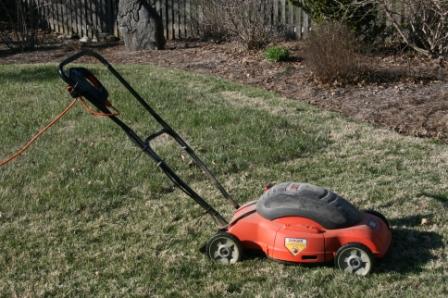
My Electric Lawn Mower
Interesting Fact: Lawn mowers and other gas-powered lawn care equipment contribute to 10% of the nation’s air pollution, according to the EPA.
We will post much more about organic lawn care and mowing. In the meantime this website is one of the best available for information on these topics.
by admin | Mar 26, 2009 | companion planting, General Info, Green Team, Intensive Gardening, Matt Gardiner, seed starting, succession planting, sustainability, Uncategorized, Vegetable Gardening
Boone Gardiner will be at the Rainbow Blossom store in St. Matthews this Saturday, March 28 from 12:30-2:30 to help get everyone ready for the spring planting season. We are focusing this event on teaching everyone how to grow their own organic veggies and herbs at home, which will save everyone money, improve their health, and save the environment. Please click on the link for more information:
www.rainbowblossom.com
by admin | Mar 18, 2009 | Boone's Blog Contributors, Composting, General Info, Green Team, Matt Gardiner, Native Plants, seed starting, sustainability, Uncategorized, Vegetable Gardening
Spring has arrived at Boone Gardiner and we have all kinds of great things to show you. We have hundreds of Kentucky grown trees available to replace trees that you may have lost from storm damage.
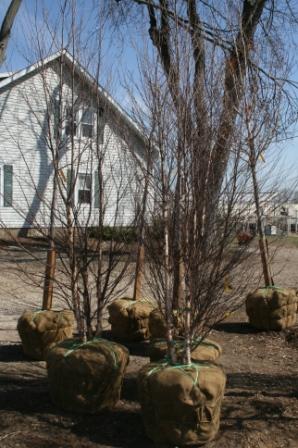
New Trees
There are new truck loads of trees and plants arriving daily. We have a wonderful selection of Sustainable and Green Gardening Products such as: composters, rain barrels, herbicides, pesticides and much more. As well as our premier line of organic seeds, Seeds of Change, are in and we have a huge selection of veggies, herbs and flowers seeds for your garden.
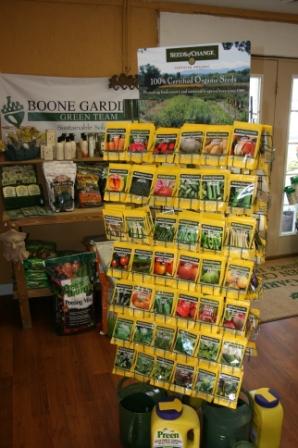
Seeds Of Change
We are also doing all kind of great things and renovations to the garden center site. We have added new display gardens, are installing a rain garden demonstration area, a new sustainable materials deck, a veggie demo garden, and much much more.
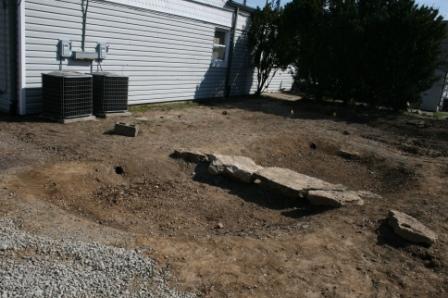
Rain Garden Construction
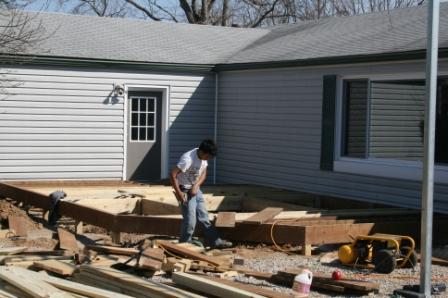
New deck being built
by admin | Mar 3, 2009 | Compost Ingredients, Uncategorized, Vegetable Gardening
In order for microorganisms to properly break down your compost pile they require a certain ratio of Carbon to Nitrogen (C: N). It is also possible to have a nervous breakdown worrying about precise ratios and recommended temperatures. There is a multitude of information on techniques, systems and recipes. I think the best approach is to keep in mind the optimal numbers and basic techniques then experiment on your own.
Everything that you put into the compost pile has a C: N ratio. For example, leaves are high in carbon with around a 60:1 ratio and coffee grounds & grass clippings have more nitrogen with a 20:1 ratio. In general, the C: N ratio that you want to achieve in your compost pile is approximately 30:1. The key is to balance the ingredients by alternating layers until you get close to that ratio.
There are a couple of indicators that you have the right ratio of C: N. After a week the center of the pile should be hot to the touch (around 130 degrees Fahrenheit). If the pile is not hot then you probably have too much carbon. Another clue that your ratio is off is a very stinky pile. Excessive nitrogen causes excessive smells from the pile. Additional carbon is the solution here.





Recent Comments